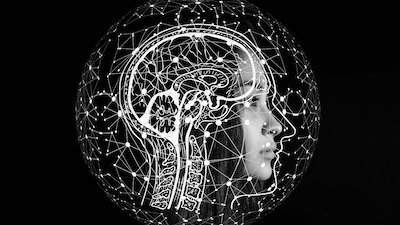
The Brain’s Adaptability: A Testimony of the Creator
The human brain is an astonishingly complex organ. The more we learn about our gray matter, the more we realize it truly is an engineering marvel. We’ve long known that different parts of the brain allow for different functions. But real-life examples are increasingly showing the brain (particularly the infant brain) to be much more complex than this simplistic understanding.
No Visual Cortex But He Can See?
Take, for example, a seven-year-old Australian boy known as “BI.”1 Since shortly after his birth he has been missing his primary visual cortex, the brain’s visual processing center, due to a rare metabolic disorder. In order to see, normally people need this section of the brain because it processes the electrical signals relayed from the eyes. If you are missing this chunk of your brain, like BI is, you should have “cortical blindness.” But BI has near-normal eyesight.
Younger Brains Adapt Better
BI is able to run around, play soccer, and even play video games. He can see and name objects and colors; choose between different faces displayed on a screen and identify whether the face is happy, fearful, or neutral; and he can grab different-sized blocks placed in front of him. His only drawback is severe short-sightedness.
This boy is the first known person without a visual cortex to have nearly normal “conscious vision.” Interestingly, doctors refer to this as “conscious vision” because others with damaged visual cortices may have “blindsight,” a “degree of unconscious visual awareness.” Although the person does not “consciously feel they can see” they are, for example, able to navigate through an obstacle course.
Because he lost that portion of his brain at such a young age his brain basically rewired itself, allowing him to see.
Researchers scanned BI’s brain with an MRI and discovered that another area of his brain has taken over for the missing visual cortex, allowing him to see. They believe that because he lost that portion of his brain at such a young age his brain basically rewired itself, allowing him to see. One researcher commented, “Younger brains just tend to recover and adapt much better.”
The Brain—a Testimony to Design
The brain is amazing and those like BI are showing researchers that it is even more astounding and complex than we thought. The brain, with all its intricacies, points clearly toward our all-wise Creator. Natural processes and random chance over long periods of time will not produce a brain with such astounding capabilities. Only an all-powerful Creator could design such a thing.
God, in his providential wisdom, has given our bodies incredible ability to adapt in this sin-cursed world. This young man’s brain “realized” something was wrong and rewired to correct the problem on its own. Stories like this should cause us to praise the wisdom of the one who has “fearfully and wonderfully” made us and given us what we need to live in this sin-cursed and broken world.
Footnotes
- Alice Klein, “A Boy Is Missing the Vision Bit of His Brain but Can Still See,” New Scientist, December 6, 2017, https://www.newscientist.com/article/2155639-a-boy-is-missing-the-vision-bit-of-his-brain-but-can-still-see/.
Recommended Resources

Answers in Genesis is an apologetics ministry, dedicated to helping Christians defend their faith and proclaim the good news of Jesus Christ.
- Customer Service 800.778.3390
- © 2024 Answers in Genesis





